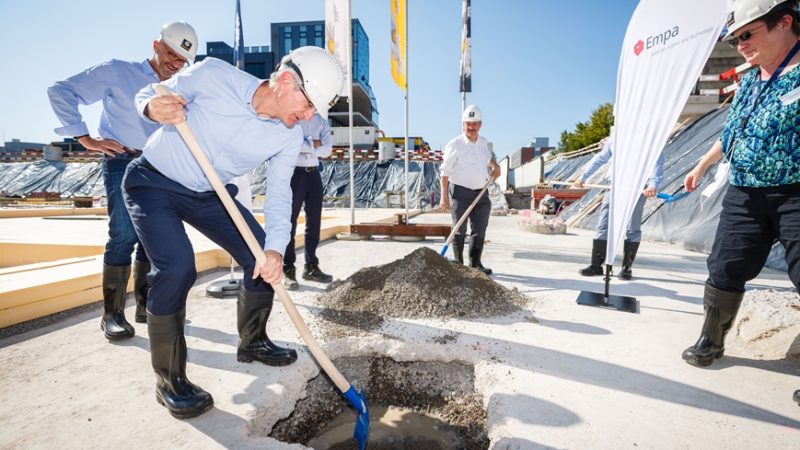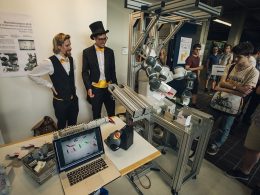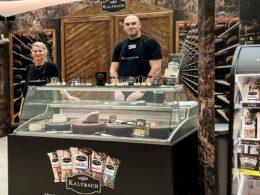Less than four months after the groundbreaking ceremony, the foundation stone for the "co-operate" research campus of Empa and Eawag was laid on 3 September 2021. At the festive event in Dübendorf, the hosts and guests filled a time capsule with items typical of the time and thus, together with an augmented reality (AR) app, gave the starting signal for "co-operate".
What should one put in a "time capsule" that is concreted into the foundation stone of a research building under construction and is intended to provide future generations with information about the era at the time of construction? Empa decided on a few products from its own research: a small steel rod made of a shape memory alloy developed at Empa and a cube created by 3D printing that demonstrates the possibilities of digital production of unique items.
Eawag Director Janet Hering put something about the liquid fertiliser "Aurin" developed at Eawag in the capsule. This contains valuable nutrients derived from urine. The new buildings will be equipped with toilets that can separate and collect urine. Jens Vollmar, Head Buildings at Implenia, contributed a stick on which the construction plans for "co-operate" are stored.
With BIM to the digital twin
According to Bona, the new research campus "co-operate" is intended to become a place of diverse cooperation with Empa partners and to link the institutions of the ETH Domain even more closely. The Head of Empa Real Estate Management, Hannes Pichler: "At co-operate, the method of "Building Information Modelling" is used. This means that before implementation begins on the building site, a digital twin is created, which reduces planning and implementation errors. The data obtained is also used later in operation".
Augmented reality makes buildings visible and tangible
Before the partners then climbed into the excavation pit together to set the time capsule in concrete and lay the foundation stone, there was a special experience for all those present: instead of studying building plans and descriptions and then imagining the future campus in their own imagination, they were able to experience the future on their smartphones and tablets today, so to speak. This was made possible by an augmented reality app "co-operate AR" programmed especially for the event. It was an impressive experience that many onlookers will probably also enjoy during the construction period.
Source: MM









